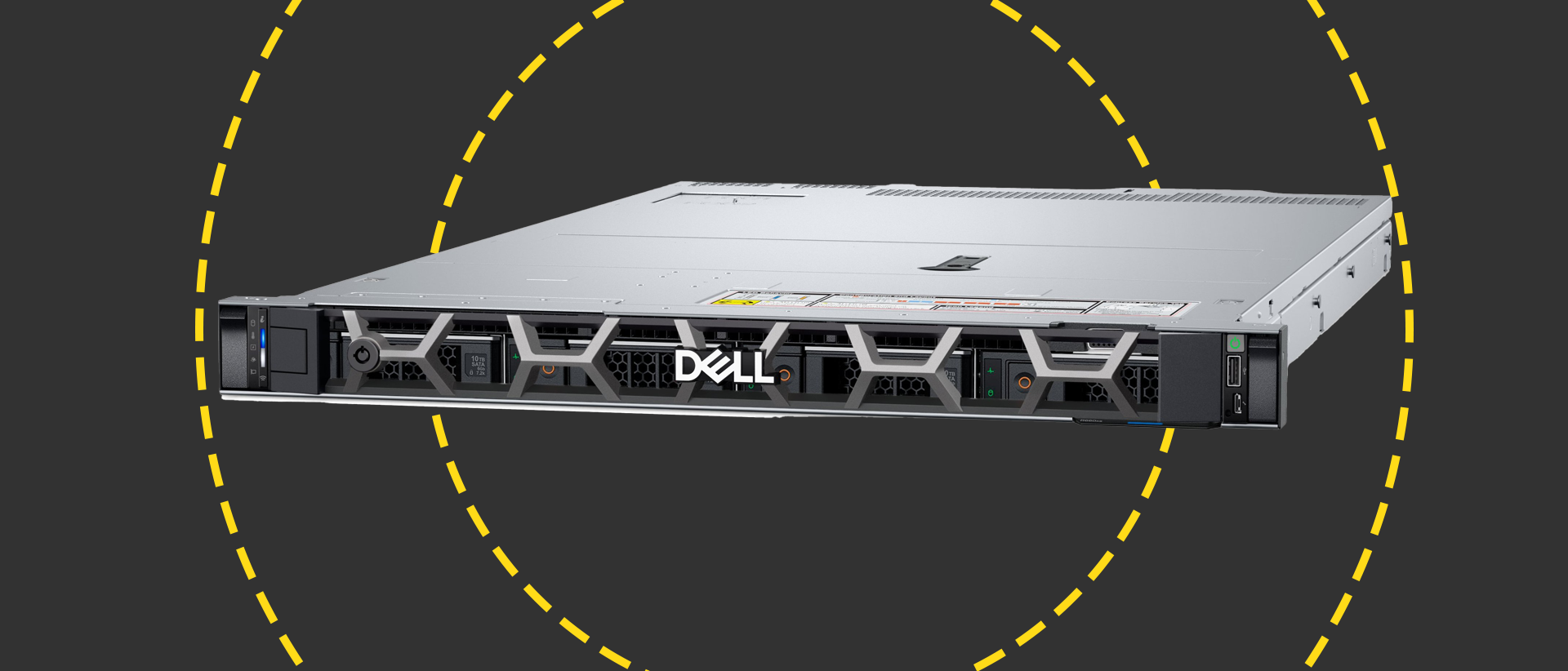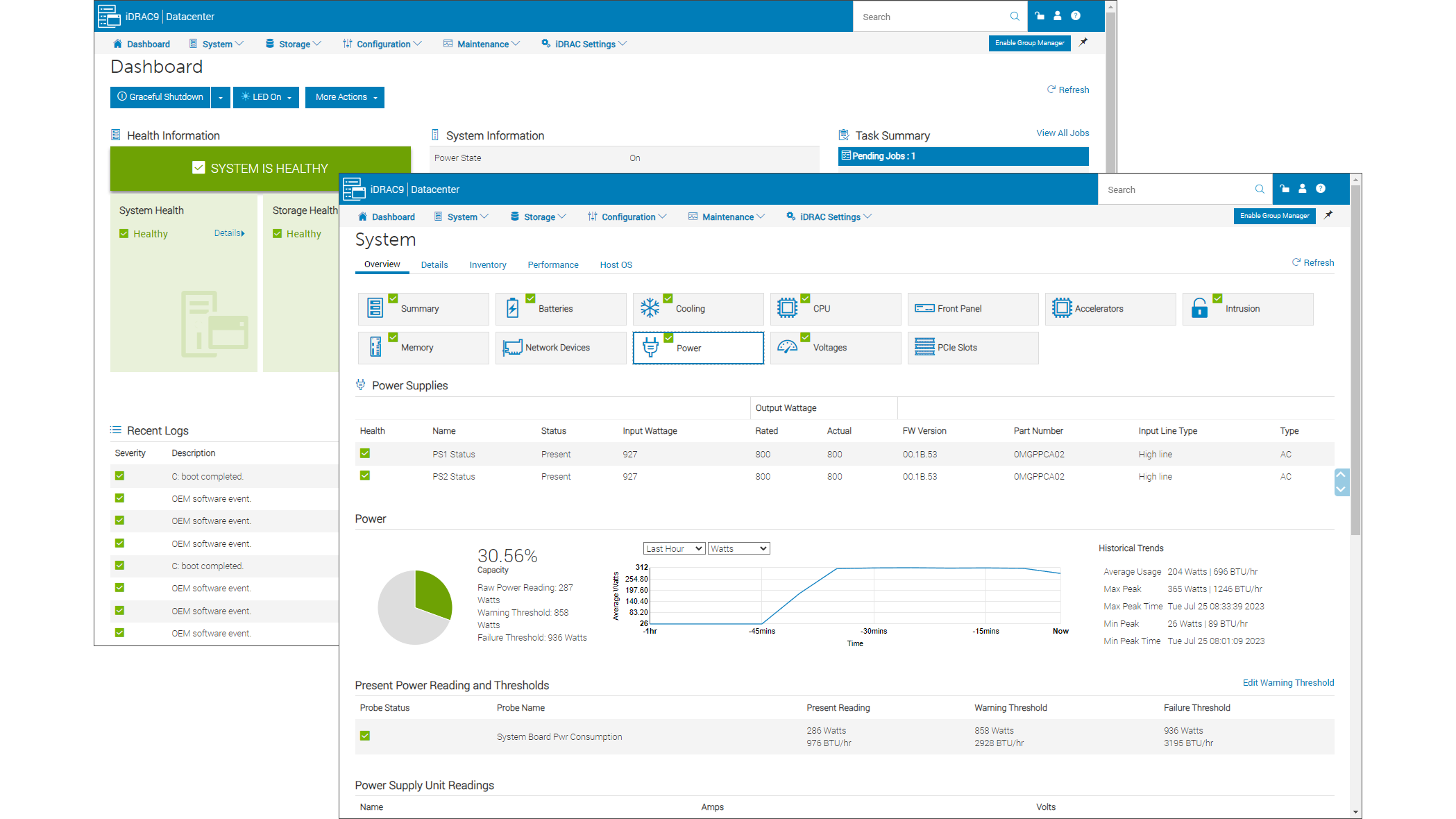Dell PowerEdge R660xs review: Rack dense power at an attractive price
This affordable 1U Xeon Scalable rack server delivers plenty of power to air-cooled server rooms

-
+
Perfect for air-cooled environments
-
+
Great value
-
+
Big storage choices
-
+
Remote management features
-
+
Versatile expansion potential
-
-
None

Data centers fearing the cost of retrofitting liquid cooling in their rack cabinets will approve of Dell's PowerEdge R660xs as it's designed to deliver a powerful package for air-cooled server rooms. Targeting medium-density workloads such as virtualization, cloud services, scale-out databases, and HPC, this cost-optimized 1U dual-socket rack server looks to offer plenty of features at a budget-friendly price.
Not every business needs core-heavy Xeon Scalable Platinum CPUs and to keep cooling demands and the price down, the R660xs supports fourth-generation Xeon Scalable Silver and Gold variants up to the 32-core 2GHz Gold 6438Y+ and 2.2GHz 6448Y models. Dell advised us that the majority of businesses don't go beyond 1TB of memory so unlike the full-fat R660, the R660xs is limited to this although it is, of course, the 4,800MT/s DDR5 variety.

Other design changes to keep the heat down are the removal of support for GPU cards (the R660 can handle three) and some minor modifications to the range of storage features. Even with these restrictions, the R660xs looks a very capable rack server.
Dell PowerEdge R660xs review: Internal layout
The R660xs chassis is substantially shorter than the R660 and in keeping with all other 'xs' models, it doesn't use a T-shaped motherboard and has both hot-plug PSUs located in a single rear bay to the left. One advantage of its lower power demands is the R660xs is offered with six PSU options ranging from low-cost 600W up to 1,800W models.
Chassis cooling is handled by a bank of seven fans arranged in front of the motherboard and these have been upgraded from the cold-swap variety in the R650xs to hot-swap modules. Lower specified systems can use standard fans while more powerful ones will need HPR Gold fans.

Internally, everything is nice and tidy with the Xeon Scalable Silver 4416+ CPUs in our system covered by large passive heatsinks and flanked on each side by banks of four DIMM slots. Further back, you have two expansion card risers and the server offers a remarkably good range of configurations.
In dual CPU servers, you can have up to two PCIe Gen5 or three PCIe Gen4 slots or a combination of both. In total, there are seven possible slot permutations and an added bonus is the OCP 3 slot underneath the central riser with our system sporting a Broadcom quad-port 10/25GbE mezzanine card to go with the standard dual Gigabit embedded LOM (LAN on motherboard).
Dell PowerEdge R660xs review: Storage features
The R660xs scores highly in the storage department as Dell offers chassis that support four LFF, eight SFF, or ten SFF front hot-plug drive bays. If you're prepared to lose the central expansion riser, you can choose a 4 LFF or 10 SSF chassis and add a dual-SFF bay at the rear.
Naturally, NVMe SSDs are on the menu and you can have ten of these at the front and team them up with two more at the back. RAID features are just as good as those available with the R660 as the R660xs supports all the previous generation PERC 11 controllers and the new PERC 12 tri-mode cards.
Our review system was supplied with a PERC 11 H755 Front controller which slips neatly into a dedicated bay above the drive backplane, supports all the usual RAID suspects, and comes with 8GB of battery-protected cache memory. Move up to a PERC 12 H965i adapter and you can add high-performance SAS4 storage devices.

Another new feature we're pleased to see is the BOSS-N1 card nestling in a dedicated slot at the back. The R650xs was only available with the original BOSS-S1 card which supports M.2 SATA SSDs, but this newer model comes with dual M.2 NVMe SSD slots making it a great choice for running an OS or hypervisor on a fault-tolerant mirrored array.
Dell PowerEdge R660xs review: Remote management
Remote management is undiminished as the R660xs has Dell's standard iDRAC9 controller which presents a web console chock-full of valuable information about system and component status, power usage, and cooling efficiency. Amongst many other useful things, it provides a detailed hardware inventory along with remote access to BIOS and storage configurations.
Plenty more management applications are available with Dell's OpenManage Enterprise (OME) software providing discovery, monitoring, and remote control services for all its servers. We run it in the lab as a Hyper-V VM and after importing an OME Enterprise Advanced licence to the server's iDRAC9, we could avail ourselves of its excellent Power Manager plug-in.
It presents global power consumption and thermal stats for all monitored servers in the OME home page and for individual servers, you can view twelve graphs showing everything from CPU, storage, memory, and fan power consumption to component utilization and airflow in CFM (cubic feet per minute). Power Manager supports up to 8,000 servers and can also enforce per-rack power cap and thermal event-based policies.
Providing the server has a valid support contract, you can integrate OME with Dell's free CloudIQ cloud-hosted service. OME functions as a collector for CloudIQ, sending telemetry and alert logs to it every 15 minutes, and you can use the CloudIQ portal to view all monitored servers, storage arrays, and switches, see system health status and alerts, pull up historical trending reports and create custom dashboards showing graphs and tables for selected server metrics.
Dell PowerEdge R660xs review: Is it worth it?
Businesses with mid-range workloads and no appetite for expensive liquid cooling in their server rooms will find Dell's PowerEdge R660xs a worthy contender. Support for 32-core Xeon Scalable CPUs and 1TB of DDR5 memory provides plenty of power in a rack-dense, air-cooled chassis, expansion potential, and storage options are surprisingly good and with our well-specified review system costing less than £8k, it's also great value.
Dell PowerEdge R660xs specifications
| Chassis | 1U rack |
| CPU | 2 x 20-core 2GHz Intel Xeon Scalable Silver 4416+ |
| Memory | 128GB 4,800MT/s DDR5 (max 1TB) |
| Storage bays | 8 x hot-swap SFF (max. 12 with rear bays) |
| RAID | Dell PERC H755 front SAS/8GB cache with BBU |
| Storage included | 2 x 1.2TB SAS3 SFF HDDs |
| Other Storage | Dell BOSS-N1 with 2 x 480GB M.2 NVMe SSDs |
| Network | 2 x Gigabit LOM, Broadcom quad 10/25GbE OCP 3 |
| Expansion | 2 x PCIe 5 or 3 x PCIe 4 slots, 1 x OCP 3 x8 edge slot |
| Power | 2 x 800W Platinum hot-plug PSUs |
| Management | Dell iDRAC9 Datacenter 16G with OME Advanced Plus |
| Warranty | 3Yr Basic On-Site NBD |
Get the ITPro daily newsletter
Sign up today and you will receive a free copy of our Future Focus 2025 report - the leading guidance on AI, cybersecurity and other IT challenges as per 700+ senior executives
Dave is an IT consultant and freelance journalist specialising in hands-on reviews of computer networking products covering all market sectors from small businesses to enterprises. Founder of Binary Testing Ltd – the UK’s premier independent network testing laboratory - Dave has over 45 years of experience in the IT industry.
Dave has produced many thousands of in-depth business networking product reviews from his lab which have been reproduced globally. Writing for ITPro and its sister title, PC Pro, he covers all areas of business IT infrastructure, including servers, storage, network security, data protection, cloud, infrastructure and services.
-
 ‘Phishing kits are a force multiplier': Cheap cyber crime kits can be bought on the dark web for less than $25 – and experts warn it’s lowering the barrier of entry for amateur hackers
‘Phishing kits are a force multiplier': Cheap cyber crime kits can be bought on the dark web for less than $25 – and experts warn it’s lowering the barrier of entry for amateur hackersNews Research from NordVPN shows phishing kits are now widely available on the dark web and via messaging apps like Telegram, and are often selling for less than $25.
By Emma Woollacott Published
-
 Redis unveils new tools for developers working on AI applications
Redis unveils new tools for developers working on AI applicationsNews Redis has announced new tools aimed at making it easier for AI developers to build applications and optimize large language model (LLM) outputs.
By Ross Kelly Published
-
 Google layoffs continue with "hundreds" cut from Chrome, Android, and Pixel teams
Google layoffs continue with "hundreds" cut from Chrome, Android, and Pixel teamsNews The tech giant's efficiency drive enters a third year with devices teams the latest target
By Bobby Hellard Published